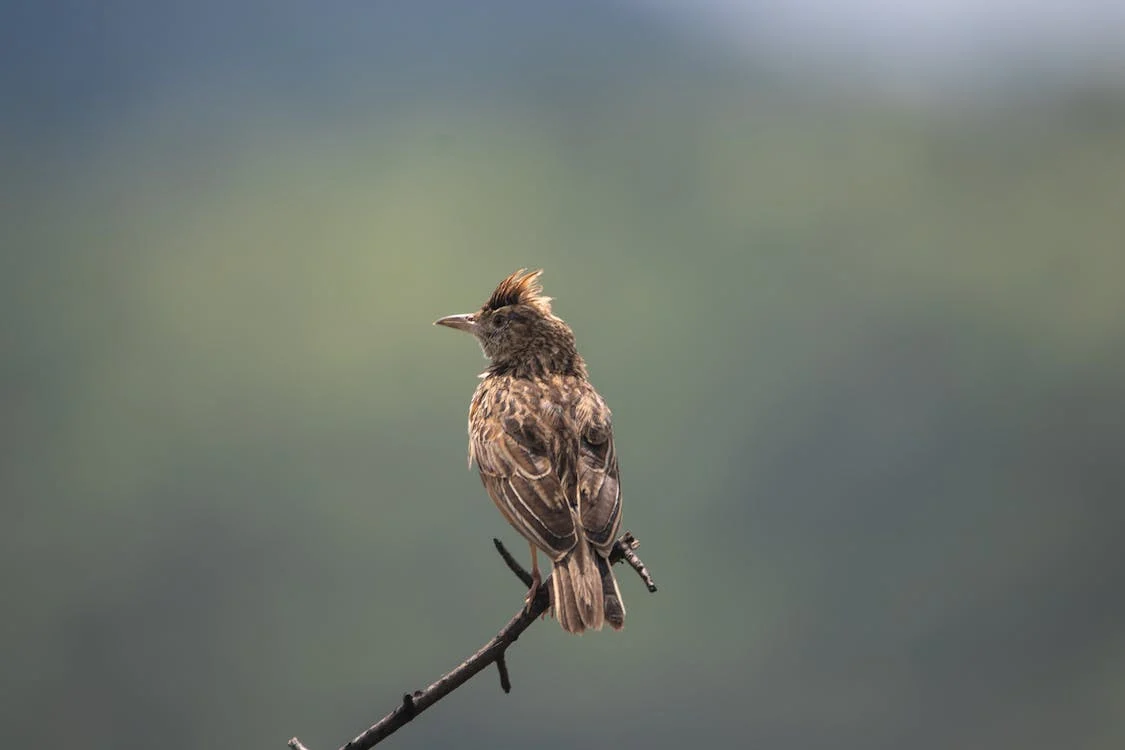It is a large, brawny lark boasting a hefty bill, short crest, and a notable rufous wing panel conspicuous during flight. This bird is geographically-variable with pairs being resident in grassy savanna, woodland, open grasslands, and cultivated lands. These birds love to perch on branches, singing a series of sweet “treee-lee-treelooo” notes while bouncing and fluttering, displaying its notable rufous wings.
Read further to know more about the Rufous-naped Lark.
What is a Rufous-naped Lark?
Rufous-naped Lark (Mirafra africana), also regarded as the rufous-naped bush lark, is a widespread bird belonging to the Alaudidae family. This bird is often heard singing on termites mound, while perched on bushes, or from a fence post.
Its seven levels of classification are as follows:
Kingdom: Animalia
Phylum: Chordata
Class: Aves
Order: Passeriformes
Family: Alaudidae
Genus: Mirafra
Species: M. africana
Rufous-naped Lark Physical Description
Rufous-naped larks are relatively large and stabby lark species with a hefty flight. These birds can grow from 5.9 to 7.0 inches or 15 to centimeters, and weigh around 40-44 grams.
The species most distinguishable features are the short erectile crest, streaked upperparts, creamy to light brownish yellow eyebrows merging with its lore, and the rufous flight feathers. Their nape and hind crown are barred along with the feather core, while edges can have chestnut, pinkish brown, rufous, or grayish brown tone. Wings are prominently rufous in flight while underwing tetrices are of a similar color. Meanwhile, upper coverts boast buff or tawny edges. Tails and rump are dark brown, but mantles are lighter. Their bill is long, black and pink. Eyes are hazel brown and feet can be pinkish to pinkish brown.
Where can they be spotted?
Rufous-naped larks thrive in dry or mesic habitats, such as open savannas, woodlands, fallow fields and lands, and may often visit bare ground next to these fields. They occur in many regions of sub-Saharan Africa, having a broad but fragmented range. Often, they can be spotted in termite mounds, small trees, fence posts, while both tall and short grass serves as their cover and foraging space.
Interesting Facts You Should Know About the Rufous-naped Lark
Rufous-naped Larks usually stand on a termite mound to feed, plucking termites using their bills as they emerge. These birds also consume other insects such as bugs, weevils, grasshoppers, beetles, caterpillars, spiders, and earthworms. During winter, it feeds on grass seeds. The species may also search for food in burnt grassland right after fires when prey are scampering and are abundant.
These birds are sluggish, which allows close encounters. They fly only in short distances, usually undulated and low level. During antagonistic encounters, it will flee from predators by running and swerving through grass undirected. They may be hard to spot while in turf due to their plumage and are easily missed when not singing.
Throughout the year, they can be heard singing, but peaks when the rain season starts. The male rufous-naped lark will spend hours on perch while singing whistled phrases containing three to five notes. In certain intervals, they will flutter their wings, creating a fast “phrrrp” or “phrrrr” often lifting the species from the branch, seemingly as it bounced. Their short crest also erects during the signing display.
Courtship occurs with the male feeding the female to establish their pair-bond and reinforce their mating chances. These birds are monogamous and will form strong connections with their partners. They construct their doomed-shaped nest using dry grass, and place it at the base of a grass tuft, against a shrub, or a bush.
Breeding season happens year-round, but peaks during the summer months. The female will lay 2 to 4 eggs, which the female will solely incubate for about 14 to 15 days. She will shoulder much of the parental responsibility after hatching. The broods will leave the nest in about 12 days even before they learn to fly.
While their declining and fragmenting population and range is declining, Rufous-naped Larks are still listed as Least Concern (LC) under the IUCN Red List.
WILDLIFE PARKS AND RESERVES WHERE THIS SPECIES IS FOUND:
BOTSWANA
SOUTH AFRICA
NAMIBIA
ZAMBIA
ZIMBABWE

